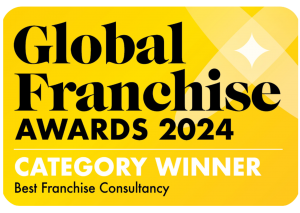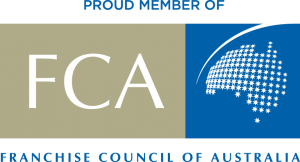People think food businesses look easy. After all, we all eat, and lots of us cook food, so it shouldn’t be that hard. They look like businesses that practically anyone can operate and make massive amounts of money in. After all, everybody eats and drinks, right? How hard can it be to operate one of these businesses?
Food Businesses represent around 8% of all businesses in Australia and within the franchise sector food franchises represent around 20% of all franchise opportunities.
There are many benefits to working in a franchised food business.
People look at food businesses and think they must be good — you don’t have to wait for the cash to hit your account like some other business opportunities, as they are cash businesses, and the cash flow is strong as it flows in daily and if you’re part of a franchise system, the franchisor would have negotiated good trading terms with suppliers, so you don’t have to have huge cash tied up in stock.
It’s been estimated that over 10% of the population (both globally and in Australia) has worked in food services at some point in their career and at any point in time the food sector represents about 5% of the total working population.
If you have worked in food service, it’s a sector worth investigating if you’re looking to buy a franchise. That’s because you kind of know what you’re in for: it’s hard work, you’re on your feet for long periods of time and your transaction dollar amount is often low, so you must get and serve lots of customers.
Some people fall in love with idea of owning a food business and having their friends come around. I can assure you it’s nothing like that, I have owned five different food franchised businesses and one independent food business. When you’re establishing your food business, you work harder than you’ve ever worked in your life before. Because it’s yours, you must and, it may take a while to get customers to change their current preferences to your products.
A food franchise would suit a large range of people but may be more desirable to people that are customer oriented rather than sales oriented and could suit both introverts and extroverts. Once the location is up and running, the owner often waits for customers to come to them. It’s true that you should be marketing over and above what the franchisor does, but this may not be everyone’s expertise, so it tends to be a reactive franchise opportunity.
Many people fall in love with the idea of owning café and it’s no wonder, as 75% of the Australian population are reported to have coffee once or twice a day, most popular with people aged between 25-34 and with over 25,000 cafes and many other food businesses offering coffee, there’s lots of coffee options to choose from.
The other popular food sectors are restaurant operations totalling over 30,000 outlets.
Whilst food is relatively easy to get into and we know people have to eat on average three times a day and the market has moved to grazing through the day which has increased the incidence of eating, and on the beverage side, it is recommended that as human beings we need to hydrate eight times a day, all of this augers well for food and beverage businesses and the beauty of franchising is that someone has developed the business model for you giving you a greater chance of success.
Food franchises have a lot of positive attributes but there also some negative attributes associated with food franchises, and they include:
- A reliance on team members that are often unskilled and potentially unreliable as they see their role as a stepping stone to their ‘real job’.
- Wage costs are wildly variable, and at the whim of sales, it’s a fine balancing act. Not too many staff or labour costs will be too high (ideally 25–30%) and not too low to impact the customer experience. But get this wrong and the results can be catastrophic.
- Cost of Goods (COGs) are variable and require excellent controls and recipe management to maintain optimum percentages. Most food businesses need to be under 30% COGs to be profitable.
- Food retailing is bloody hard work. Standing on your feet for excessive periods of time, and today, food service is seven days a week from early to late, so it has the potential to impact your quality of life.
- The success of a food business is heavily reliant on real estate: location is everything, and that comes at a price. Ideally, a food business would like to run at 4–10% for full-service restaurants and 8-14% for takeaway, known as quick-service restaurants (QSRs).
- Consumer behaviour can change, and unless you have a strong loyalty program, ongoing marketing and a great product that is always evolving, customers are prone to try other products.
- If you’re situated in a shopping centre and to a lesser degree on a high street, there’s a strong chance of competition and copying of your best products which you have no control over.
The market is changing from technology advancements to shifting consumer preferences, several emerging trends are shaping the future of franchising in hospitality. If you’re looking at a food franchise, you need to be aware of these trends and what the franchisor is doing to address these emerging trends.
The Trends in Food franchising
Technology is playing a pivotal role in enhancing guest experiences.
Environmental consciousness is no longer a niche concern; it’s a mainstream trend.
The pandemic accelerated the focus on health.
Innovation with culinary experiences and higher consumer expectations, exacerbated by the proliferation of celebrity chef programs.
Additionally, dietary preferences like veganism and gluten-free options are now standard offerings although stand-alone outlets focussed on this narrow niche have not proven to gain total market acceptance as evidenced by the high failure rate of these niche businesses.
Convenience is expected by consumers either through access to outlets, drive thru and speed of service.
Customisation of products to suit customer’s taste preferences.
Online and mobile ordering to assist with both convenience and customisation.
Robotics and automation have become increasingly popular in the fast-food industry. Robots have allowed fast-food restaurants to reduce labour costs and increase efficiency while still providing customers with consistent quality and service.
Premium quality offerings at a premium price point.
A value option on the menu for the cost conscious particularly in this period of high inflation, high interest rates and lower consumer confidence.
Consumers are looking for Value over Price, so you can have a premium offer, but what’s most important is quality.
In summary, food franchising is a great way to get into a business by leveraging the systems that have been developed by a franchisor, it’s been proven there is over a 50% increase in business success over independent food businesses and that because the franchisor has usually addressed many of the emerging trends that affect a food operation, there’s a lot to operating a successful food business, in franchising the franchisor builds the systems so that the team can operate the systems to assist the running of the business, in independent businesses much of the operations are the owner’s responsibility, Franchising makes running a food busy easier.
Interested in joining a food franchise brand or looking to franchise your food business? Reach out to the Franchise Ready team at info@franchiseready.com.au or call us directly on +61 289991120.









